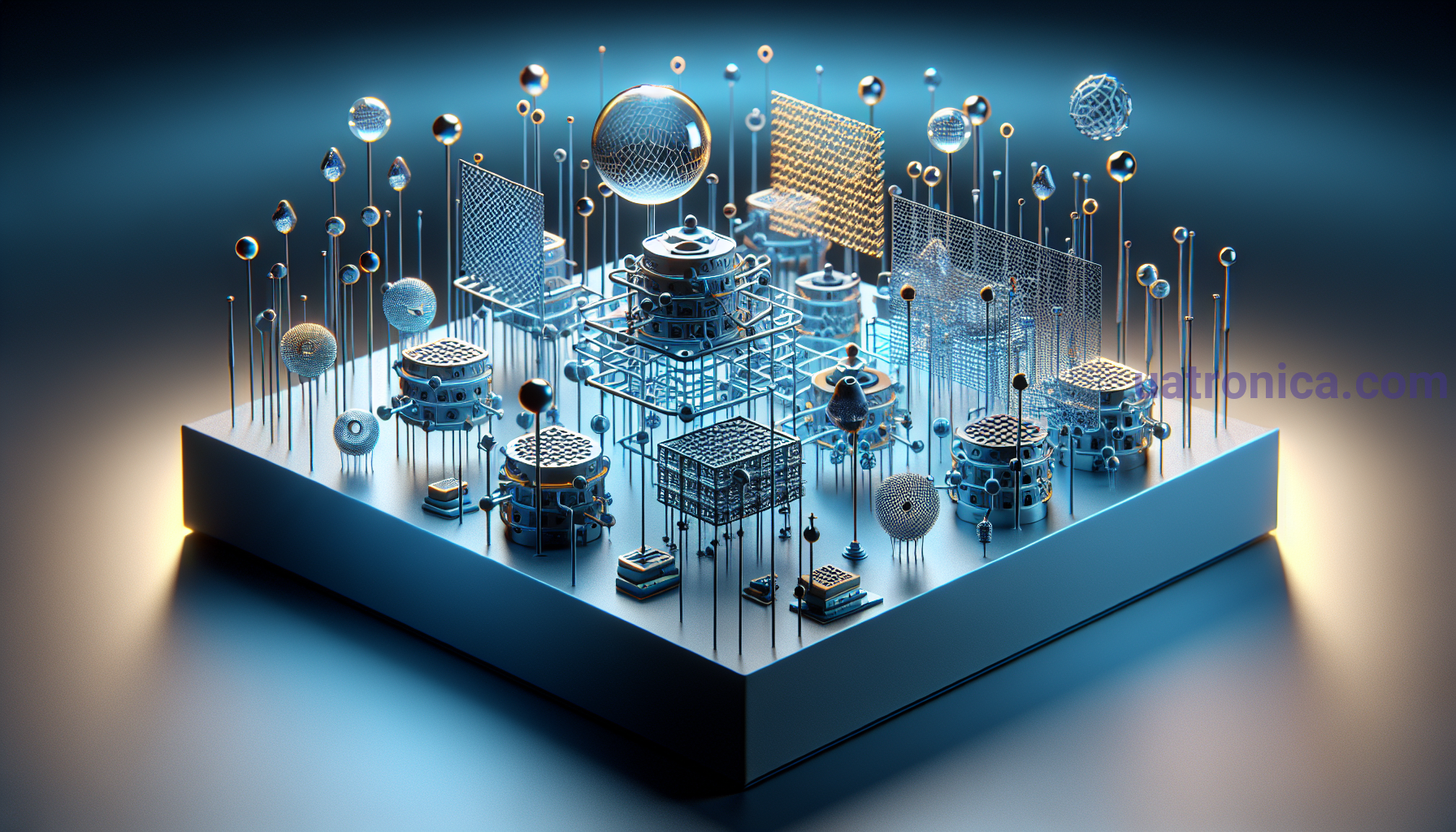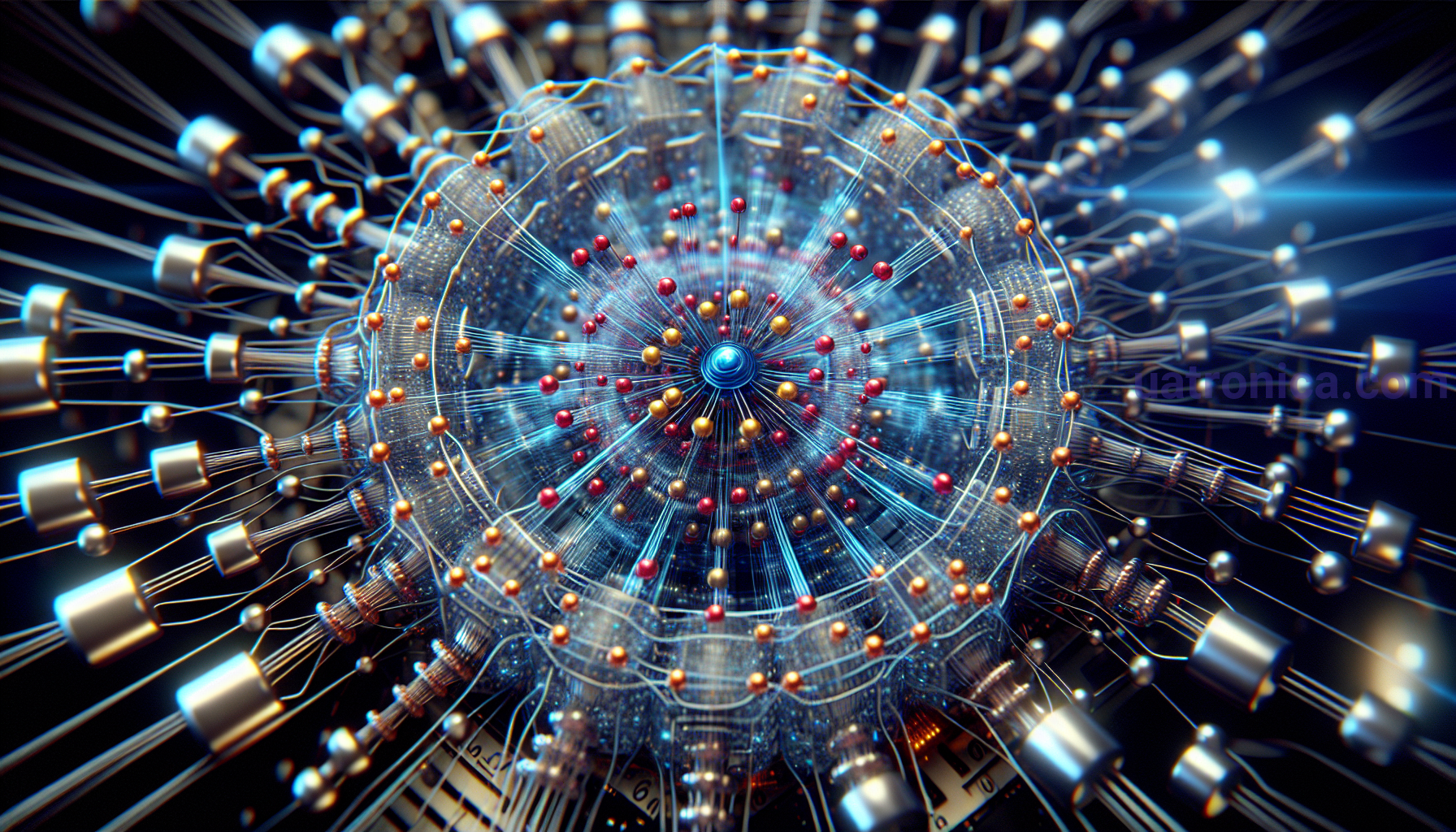10 amazing scientific achievements that will revolutionize the future of electronics
The modern world cannot exist without electronics. This branch of science certainly affects various aspects of our lives, from lighting and communication to transportation and entertainment. Thanks to constant scientific research and development, we can observe incredible breakthroughs in the field of electronics.
In this article, we take a look at 10 amazing scientific breakthroughs that are revolutionizing the future of electronics and semiconductors. They open up new opportunities for the development of more powerful, efficient and functional devices that make our work easier and improve the quality of our lives.
Stages of development of electronics:
Before going directly to the list of studies, let's briefly consider the main stages of the development of electronics:
- Vacuum tube era (before 1947): Vacuum tubes were the first devices used to amplify electrical signals and control current. Although they were effective, they had many drawbacks, including large size and high power consumption.
- Transistor era (1947–1962): The invention of the transistor in 1947 was a turning point in the development of electronics. Transistors were much smaller than vacuum tubes, consumed less power and did not heat up as much. They provided a way to develop compact and powerful devices.
- The era of integrated circuits (1962–present): The invention of integrated circuits in the 1960s was another significant step in the development of electronics. An integrated circuit (or simply a microcircuit) combines many components of an electronic circuit on one small crystal. This makes it possible to create extremely powerful and complex devices that can perform more and more functions.
Now, let's move on to the list of impressive scientific achievements:
1. Quantum computers
Quantum computers are devices that use quantum mechanics to process and store information. They are based on the principles of quantum mechanics, such as a quantum bit (qubit), which can be in a state of 0, 1, or any superpositioned combination of these states. Quantum computers have the potential to solve problems that ordinary computers cannot solve, even the most powerful of them. For example, they can factor large numbers faster, solve complex optimization problems, and model complex chemical reactions.
Information from the official website of Wikipedia: Quantum computer
2. Graphene
Graphene is a single layer of carbon atoms arranged in a hexagonal network. It has a number of unique properties that make it an excellent material for electronics. Graphene has extremely high electrical conductivity, good thermal conductivity, high mechanical strength and flexibility.
Graphene is used in a variety of electronic devices, including electrodes, transistors, sensor screens, nanochips, batteries, and thermal switches. It enables the creation of faster, more energy-efficient and smaller devices that deliver impressive performance.

You can check out the latest products using graphene at UAtronica.
3. Memristors
Memristors are one of the most famous types of semiconductor devices that store information in the form of resistance changes. They have the ability to remember their previous states and change their electrical response as a result of applied voltage.
Memristors can be used to create a new generation of memory that will be much faster and have a larger amount of information storage. They help improve the performance and energy efficiency of electronic devices such as computers, smartphones and other portable devices. You can find out what memristors are from this article.
4. Quantum dots
Quantum dots are nanoparticles of semiconductor materials that can emit light depending on their size. They have quantum properties and can emit narrowband light. Therefore, quantum dots are used to create OLED screens, LED lighting, solar batteries, photodetectors, and many other devices.
Quantum dots differ from conventional semiconductors in that they have properties that depend significantly on their size, shape, and the materials from which they are made. This makes it possible to control the properties more precisely and to use quantum dots to create new devices with impressive optical properties.
You can learn more about quantum dots in this article.
5. Nanowires
Nanowires are semiconductor wires on the nanometer scale. They are only a few nanometers in diameter and can be several micrometers or more in length. Nanowires have unique electrical and optical properties that can be used to create a variety of devices.
Nanowires are used to create electronic components such as transistors, solar cells, and LEDs. They are one of the main building blocks for the development of nanoelectronics.
6. Perovskite semiconductors
Perovskite semiconductors are a class of materials with a structure similar to that of a perovskite. They have unique electrical and optical properties that distinguish them from conventional semiconductors. One example of a perovskite semiconductor is a perovskite solar cell, which can generate electricity using solar energy at a lower cost. This paves the way for more efficient and affordable solar cells.
Learn more about perovskite semiconductors in the article Perovskite Semiconductors: A New Semiconductor for Solar Cells.
7. Quantum networks

Quantum networks are network structures that use quantum mechanics to transmit and process information. They are based on the properties of quantum objects, such as quantum bits (qubits), which can be in state 0, 1, or in any superpositioned combination of these states.
Quantum networks have the potential to significantly increase the speed and security of information transmission. They can provide robust cryptography, which has an insurmountable computing resource requirement to crack keys.
8. Nanotubes
Nanotubes are nanostructures with an atomic thickness and a cylindrical shape. They are usually made of carbon or other semiconducting materials such as metals and strawberries.
Nanotubes have unique electrical and mechanical properties. They can be used to create high-frequency electronics, battery electrodes, sensors, and many other devices.
You can learn more about nanotubes in the article "Nanotubes: a new material for electronic devices".
9. Biosensors
Biosensors are devices that use biological components such as enzymes, antibodies, or nucleic acids to detect an analyte (the substance being analyzed) in a sample. They can be used to determine the concentration of substances, including glucose, alcohol, proteins and DNA.
Biosensors have significant potential in medicine, military, and industry. They can be used to diagnose various diseases, identify biological threats, and control product quality.
10. Quantum dot transistors
Quantum dot transistors are semiconductor transistors that use quantum dots to control electrical current. They have the ability to control single electrons, making them ideal for miniaturizing electronic devices.
Quantum dot transistors can be used to create powerful, fast and energy-efficient computers, telecommunications systems and other devices. They open up new opportunities for the development of electronics in the future.
Conclusion
The development of electronics is at a great pace, and we can expect even more impressive scientific achievements to appear in the future. Quantum computers, graphene, memristors, quantum dots, nanowires, perovskite semiconductors, quantum networks, nanotubes, biosensors, and quantum dot transistors are just a few. Thanks to these breakthroughs, we can expect our electronic equipment to become more powerful, energy efficient, miniature and functional.
If you are interested in the electronic component base, you can find many interesting devices at UAtronica. For example, you can check out the PESD5V0X1BT high-speed surge protection diode, or the RC0603FR-072K43L surface mount resistor, which is used in many electronic devices.










